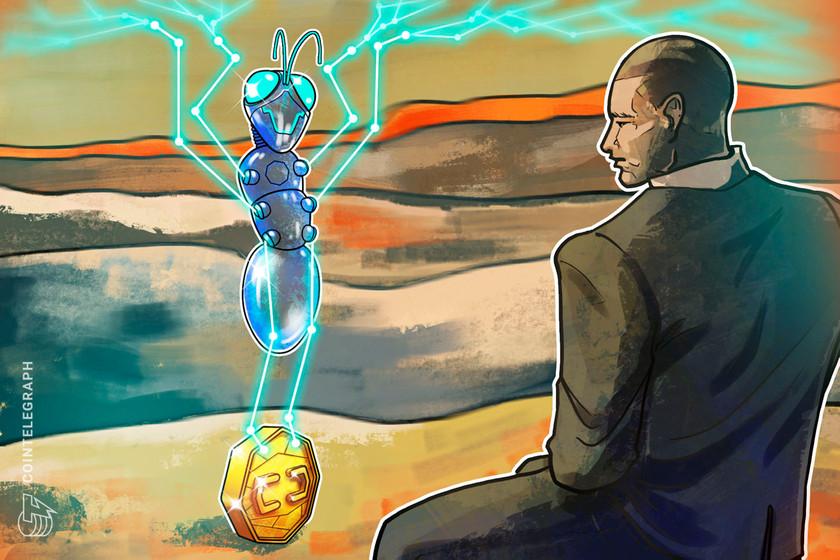
Regulatory bodies must evolve with the markets they regulate, and when it comes to the crypto market, it becomes especially important.
With extreme positions on both sides, some would have us believe that decentralized technology and regulation are mutually exclusive. As pervasive as that narrative has become, a more evolved view is that both decentralization and regulation are inevitable, so the best results will flow with regulators and innovators coming together. But what will that cooperation look like?
At the Stellar Development Foundation, our view is that regulators and innovators will (and should) influence each other, and that means both sides should be prepared to compromise. Let’s start with some honest self-reflection: There is no inherent quality of blockchain or cryptocurrency that deserves to be wholly unregulated, but on the other hand, neither does the technology deserve to be banned or unfairly regulated simply because it is new or different.
The Financial Action Task Force
Distributed ledger technology is a paradigm shift. Traditional finance is vertical and intermediated, while decentralized finance (DeFi) is flat and peer-to-peer (P2P). The problem we now face is that financial regulations are almost uniformly premised on regulating intermediaries — no intermediary means no jurisdictional hook. It is this lack of clear jurisdiction that makes regulators nervous about a decentralized future. The Financial Action Task Force, or FATF, admitted this fear explicitly in its recent draft guidance on virtual assets and VASPs:
“Moreover, full maturity of these protocols that enable P2P transactions could foreshadow a future without financial intermediaries, potentially challenging the effectiveness of the FATF Recommendations.”
However, as we previously noted, when it comes to the FATF draft guidance, fears of lost market share or shrinking regulatory turf do not form a basis for sound policymaking.
Related: FATF draft guidance targets DeFi with compliance
Often, the fears that follow a paradigm shift result in a regulatory crackdown. De-risking is a prime example. As regulators promulgate ever-tougher Anti-Money Laundering regulations, businesses respond by cutting off service to less profitable customers. As a result, regulatory and business interests are served, but more and more individuals, particularly the global poor and businesses that serve them, find themselves locked out of the financial system. The FATF recently acknowledged its role in perpetuating this pernicious problem. But, those forced out of the financial system by regulation are the very people blockchain technology most empowers by reducing their dependence on intermediaries. At the Stellar Development Foundation, we see this firsthand through our work with partners like Leaf Global and Tala, which empower the working poor and migrants fleeing disaster or persecution in their home countries with blockchain-based access to financial services.
Different approaches
Despite such benefits, country-level responses to blockchain have been mixed. Where countries like India, Turkey and Nigeria saw fear, others like Singapore, Switzerland, Bermuda, Ukraine — and now El Salvador — recognized the opportunity, developing new regulatory frameworks embracing blockchain’s decentralized nature. And they are reaping the reward. These nations are becoming global blockchain technology hubs.
Innovators and entrepreneurs are drawn to their certain and stable regulatory environments. While calls for a regulatory crackdown on cryptocurrencies grow louder in the United States and European Union, those countries listed above jump further ahead.
The U.S. and other advanced economies, particularly in the West, are rapidly approaching an inflection point. The decision ahead is no longer whether to regulate, but how. Fortunately, policymakers do not have to decide in a vacuum and would do well to learn from the two groups of countries mentioned above — those trying to keep crypto out and those welcoming it in. Without exception, those countries that proactively tailored their regulatory bodies to the technology have been more successful than those that tried to ban it. And yet, while it is not too late for the U.S. to follow the successful examples, it must affirmatively choose to do so.
FinCEN
The Financial Crimes Enforcement Network’s (FinCEN) proposed self-hosted wallet rule provides a useful case study of this choice. From the outset, FinCEN’s proposal was hostile toward decentralization and individual empowerment. While it would not expressly ban self-hosted wallets, many believe it would in practice. However, the blockchain community responded in force, delivering a record number of comments in a very short time. One of the themes that emerged from those comments was that FinCEN already had access to most of the information the proposal sought due to the inherent transparency of public blockchains. To its credit, FinCEN appears to have listened and will be seeking further engagement with those who know the technology best.
While we will have to wait to see how the story ends, FinCEN seems to now be engaging in the collaborative approach with industry envisioned — but not always practiced — by the rulemaking process. Compromise isn’t easy, but it yields the best results.
Related: Authorities are looking to close the gap on unhosted wallets
Takeaways
The mission of regulators is to safeguard markets, not to ensure they never change. Policymakers should accept that decentralization is a new, different paradigm deserving of its own regulatory approach. The industry’s resistance thus far is not so much to the idea of being regulated, but rather to being forced into a regulatory framework that doesn’t fit. Despite this, regulators and innovators can find middle ground, but only if both sides keep an open mind.
Similarly, the blockchain community must do a better job of explaining why and how the technology is different, educating policymakers about the actual risks while highlighting real examples of its benefits. Moreover, we should embrace appropriately tailored regulation.
After all, the legitimacy that would come from regulatory acceptance of the technology may very well be the final hurdle on the path to mass adoption.
The views, thoughts and opinions expressed here are the author’s alone and do not necessarily reflect or represent the views and opinions of Cointelegraph.
Comments
Post a Comment